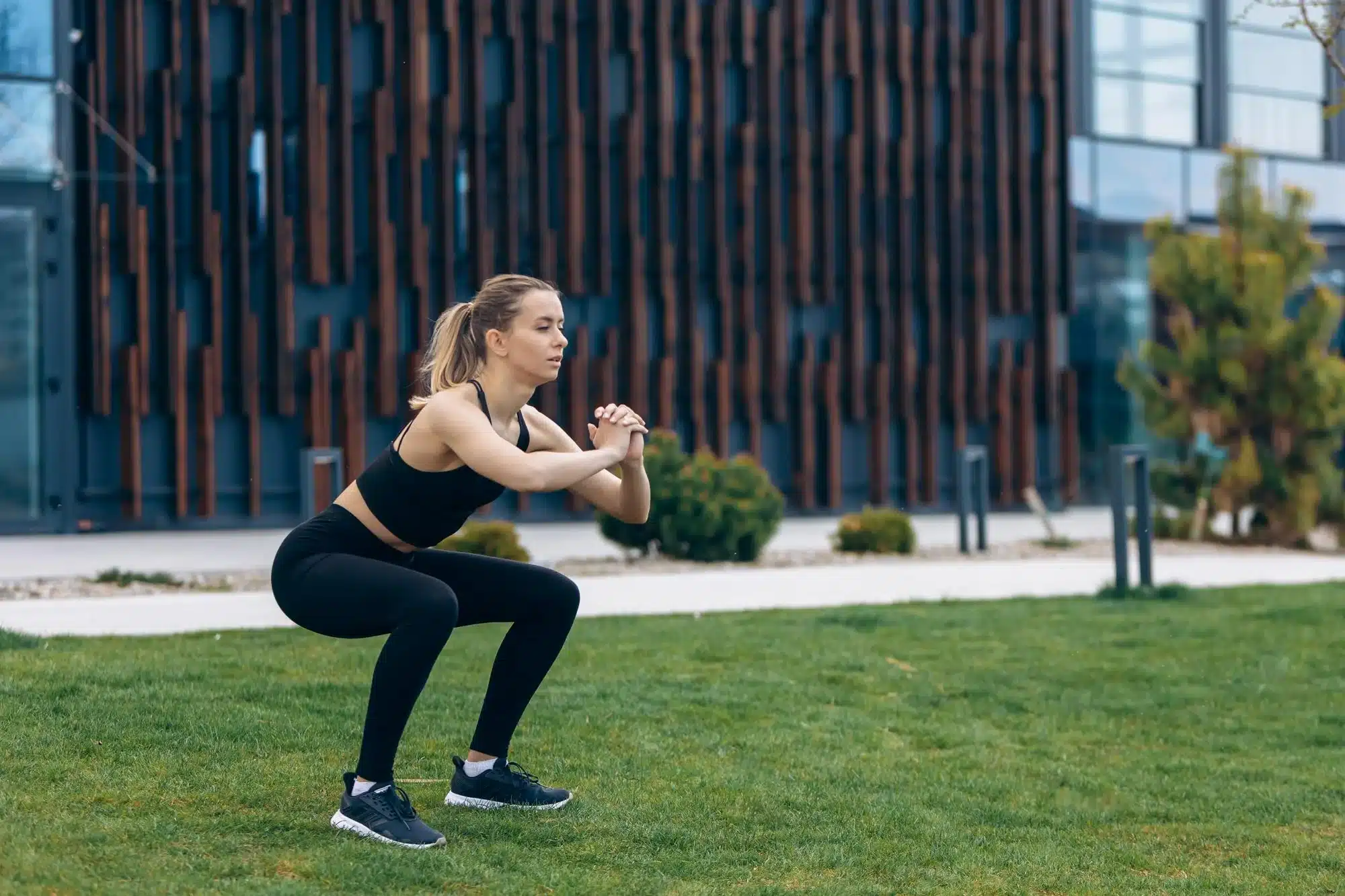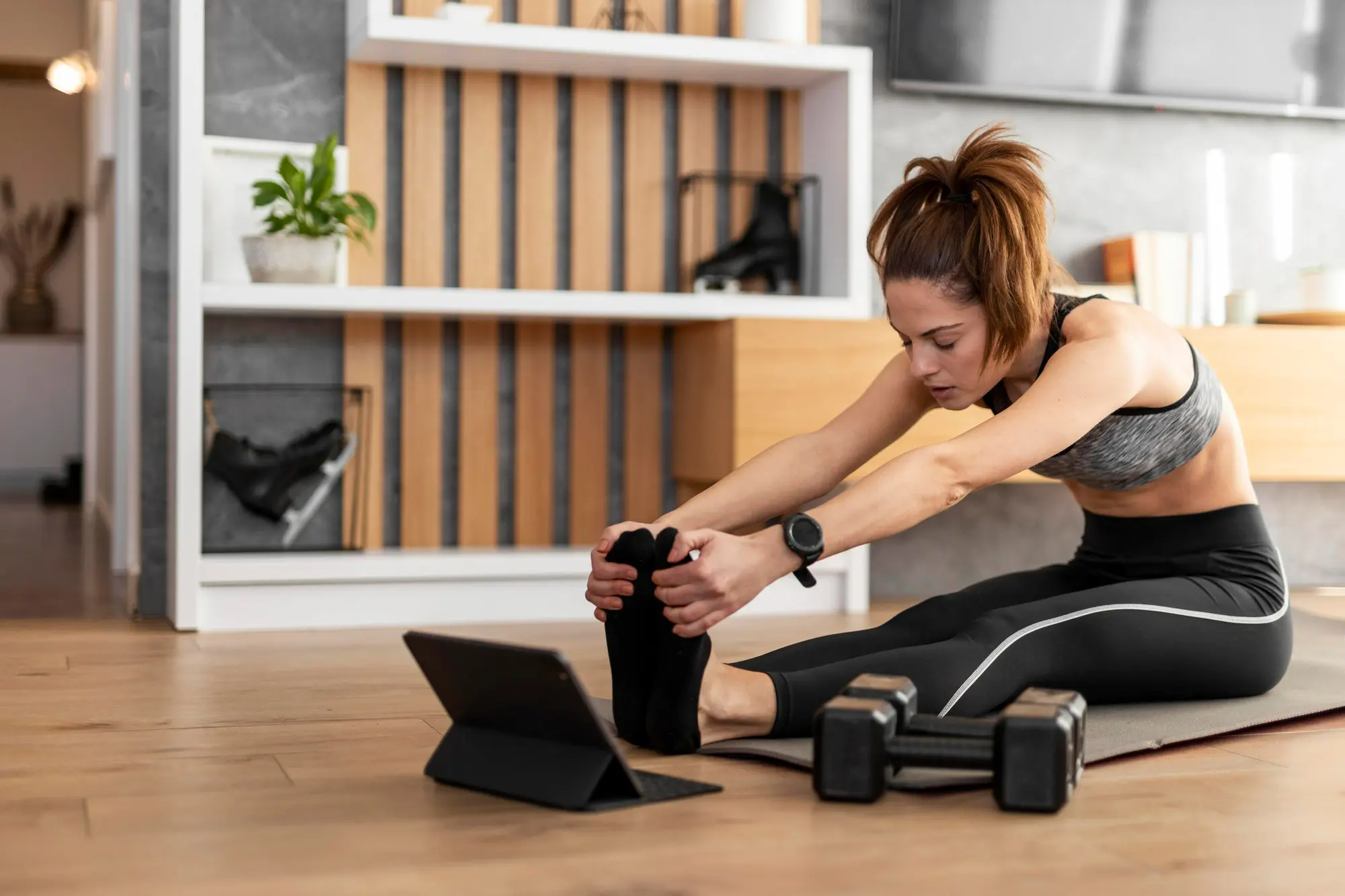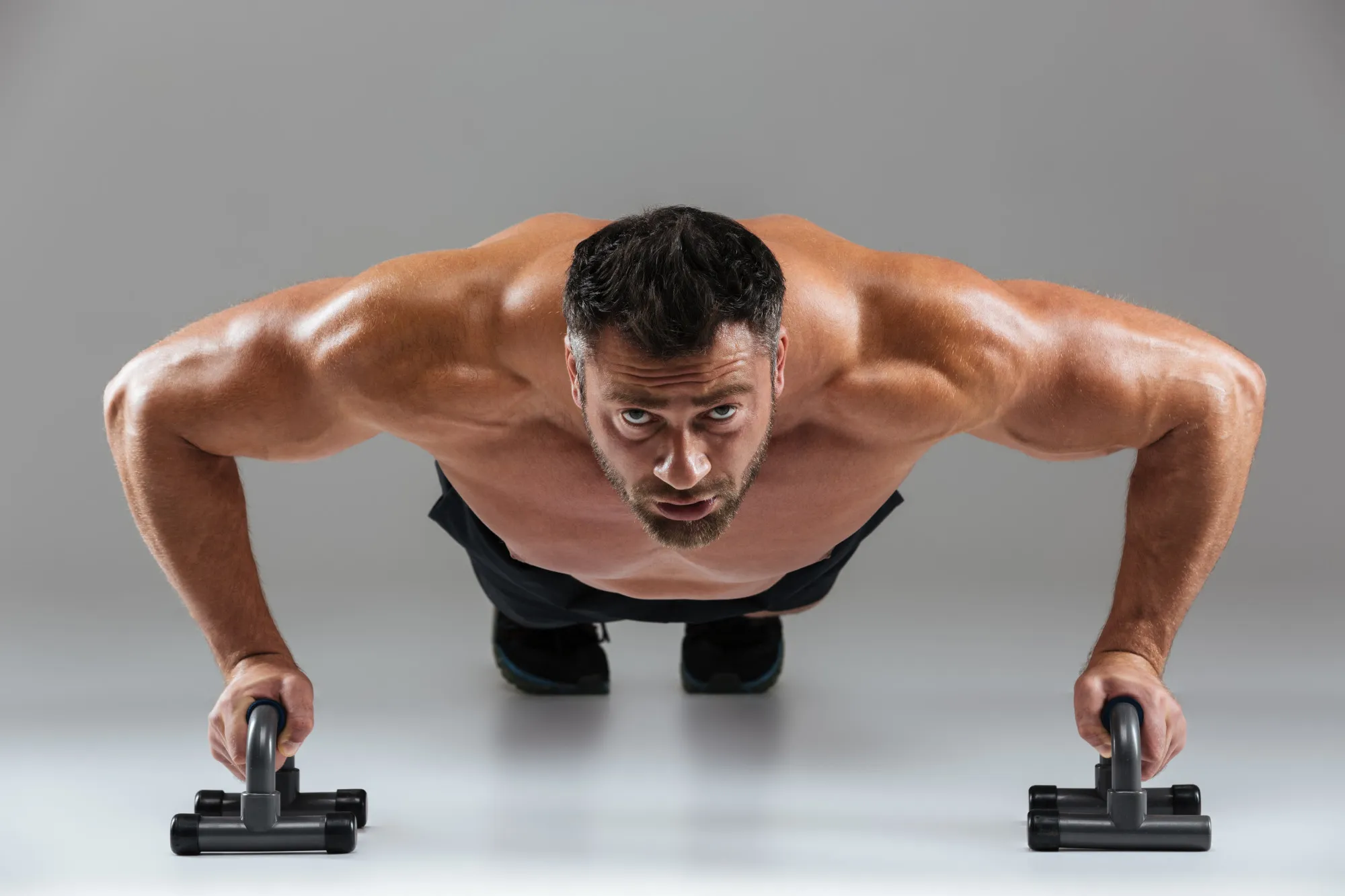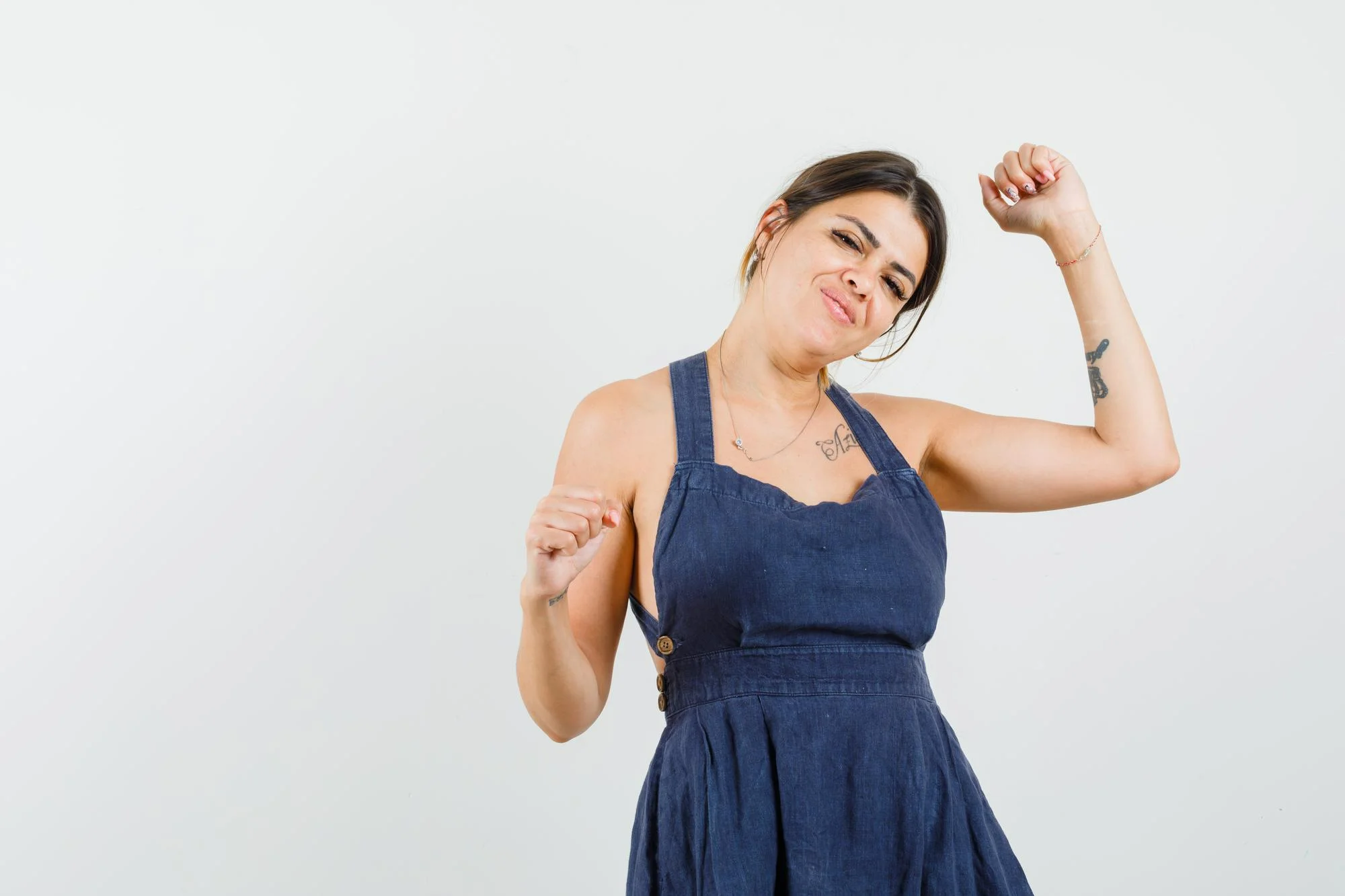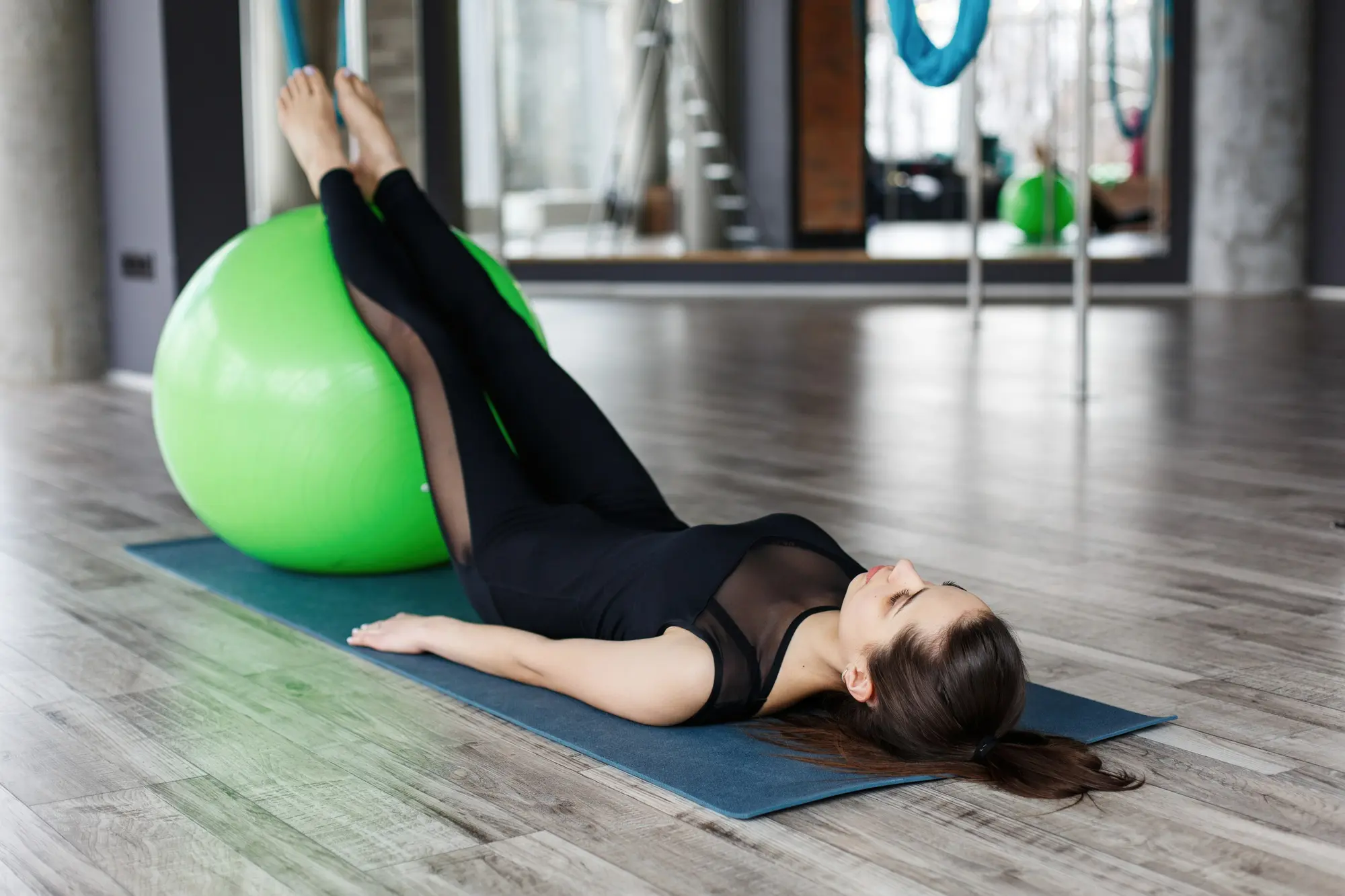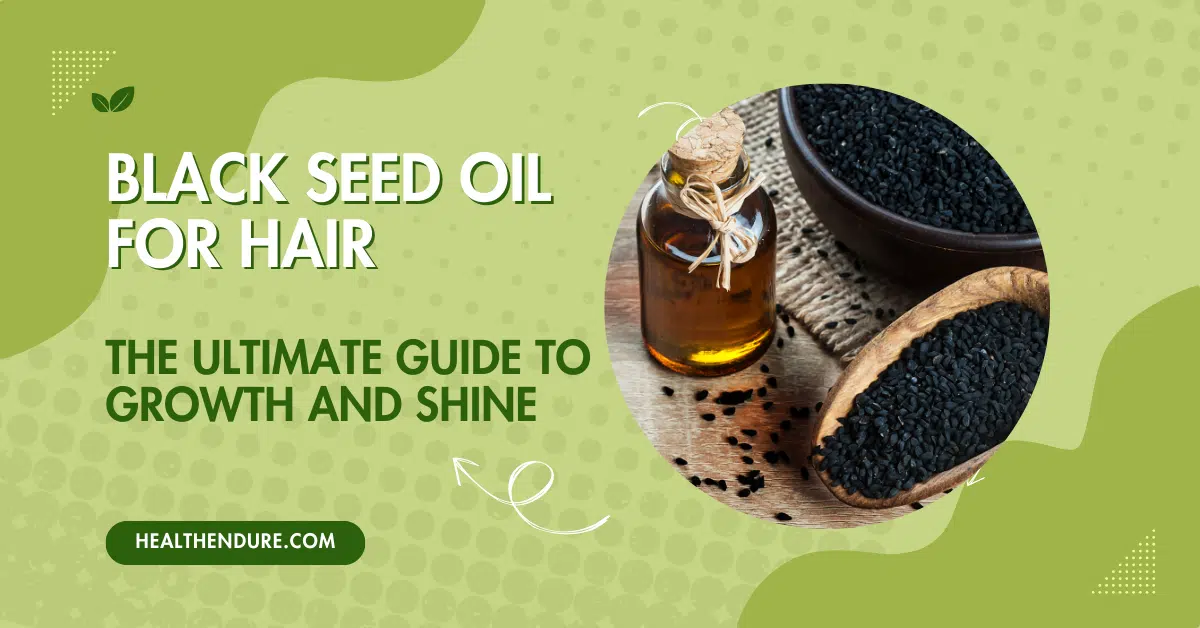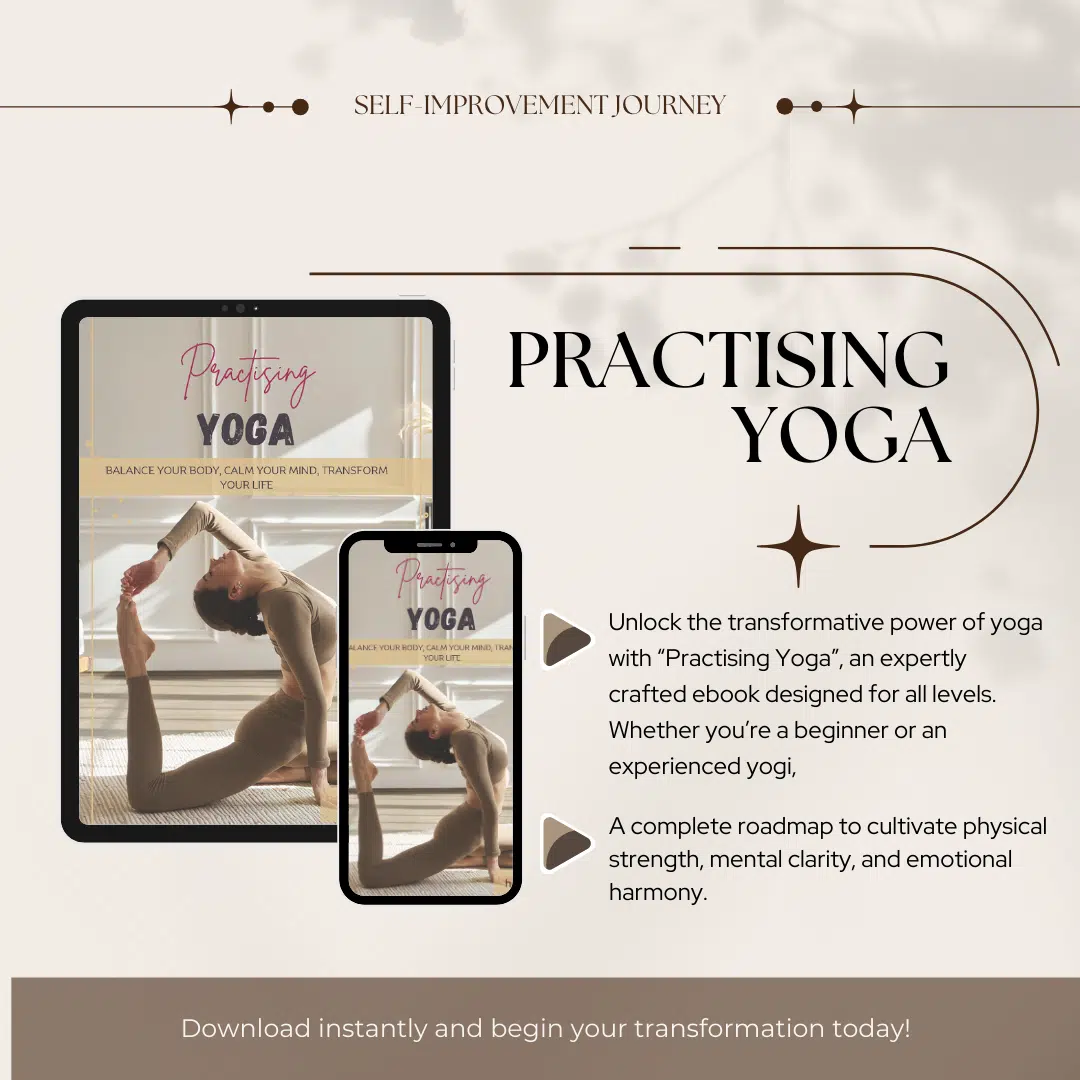- Understand Squats Workout
- Benefits of Squats Workout
- What is the Proper Squats Form
- Different Types of Squats
- Plyometric Squats or Jump Squats
- Proper Foot Placement During Squats
- Common Mistakes to Avoid During Squat
- How Many Squats Should I Do Per Day?
- FAQ: What are the Tips to Improve Your Squat Performance
- FAQ: How to Incorporate Squats into Your Workout Routine
- How Many Calories Do Squats Burn
- Final Words
Squats are a fantastic exercise for developing lower body strength and muscle tone. But A question people ask as “how many squats should I do a day?”. What are the advantages of performing this exercise daily, and how can you include them in your workout routine?
Understand Squats Workout
Your core, glutes, and thighs are all worked out by squats. It has many versions that target various muscle groups and can be performed with or without weights. Squats are one of the best workouts for adding strength and muscle mass and have been around for ages.
A recent research study delves into the profound impact of varying stance widths, foot placement angles, and experience levels on knee, hip, and trunk motion, shedding light on the scientifically significant nuances that influence loading patterns and biomechanics during this fundamental exercise.
Benefits of Squats Workout
There are many benefits to doing squats regularly. Squats help to:
- Build muscle mass
- Increase strength and improve balance and coordination.
- It helps to improve posture and reduce the risk of injury.
- Improve cardiovascular health and reduce body fat.
- Increase your metabolism and burn calories more efficiently.
- Increase flexibility and range of motion, which can help to prevent injuries.
- Build mental toughness and focus. It requires concentration and direction and can help improve your mental toughness.
- This can be beneficial for athletes and everyday people alike.
Moreover, several research studies were made on the benefits of squats. Research published in 2022 elaborated on the effects of the Squat Exercise on Lower-Limb Muscle Hypertrophy.
What is the Proper Squats Form
Before you start doing squats, it’s essential to make sure you understand the proper form.
- Start by standing with your feet hip-width apart and your toes pointed forward.
- Keep your chest up and your back straight as you bend your knees and lower your body. Make sure your knees stay in line with your toes.
- Your thighs should be parallel to the floor, and your hips should be pushed back as you lower yourself.
- Once you’ve reached the bottom of the squat, pause for a second, then drive through your heels to stand up straight.
- Make sure to keep your chest up and your core engaged as you stand up. This is one repetition.
Different Types of Squats
There are the following major four effect types of squats:
Air Squats or Body Weight Squats
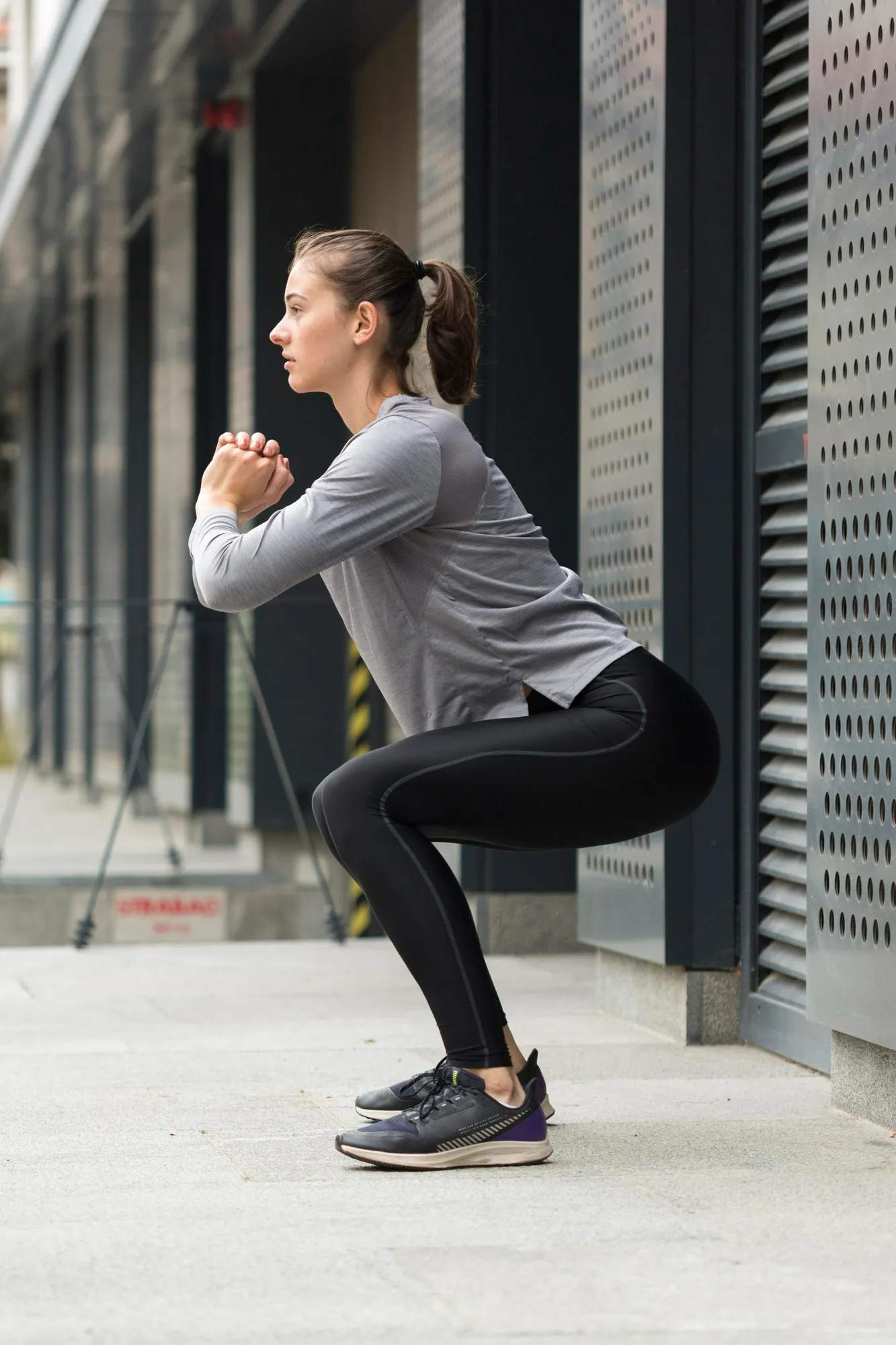
Air squats, or bodyweight squats, are a foundational exercise suitable for all fitness levels. Unlike weighted squats, air squats focus on building strength using your body weight without using any additional resistance or weights. They’re a versatile option for at-home workouts and an excellent addition to any routine.
Execution
In a bodyweight squat, you lower your body by bending your knees and hips, maintaining proper form, and then return to the starting position. It’s a controlled movement focusing on bodyweight resistance.
Purpose
Bodyweight squats are versatile and serve various purposes. They are excellent for building lower body strength and improving mobility and can be used as a warm-up or foundational exercise in strength training routines. Bodyweight squats are suitable for individuals of all fitness levels.
Single Leg Squats

Single–leg squats, also known as pistol squats, involve squatting while balancing on one leg, using only your body weight for resistance.
Execution
In a single-leg squat, you balance on one leg while lowering your body with the other leg extended straight in front. The goal is to descend as far as possible while maintaining balance and then return to the starting position. This exercise challenges stability and engages specific muscle groups.
Purpose
Single-leg squats are effective for building strength, stability, and balance in the lower body. They target muscles in the thighs, hips, and core. Single-leg squats improve unilateral power, enhance athletic performance, and reduce muscle imbalances. Proper form is crucial to maximize the benefits of this exercise.
Weighted Squats
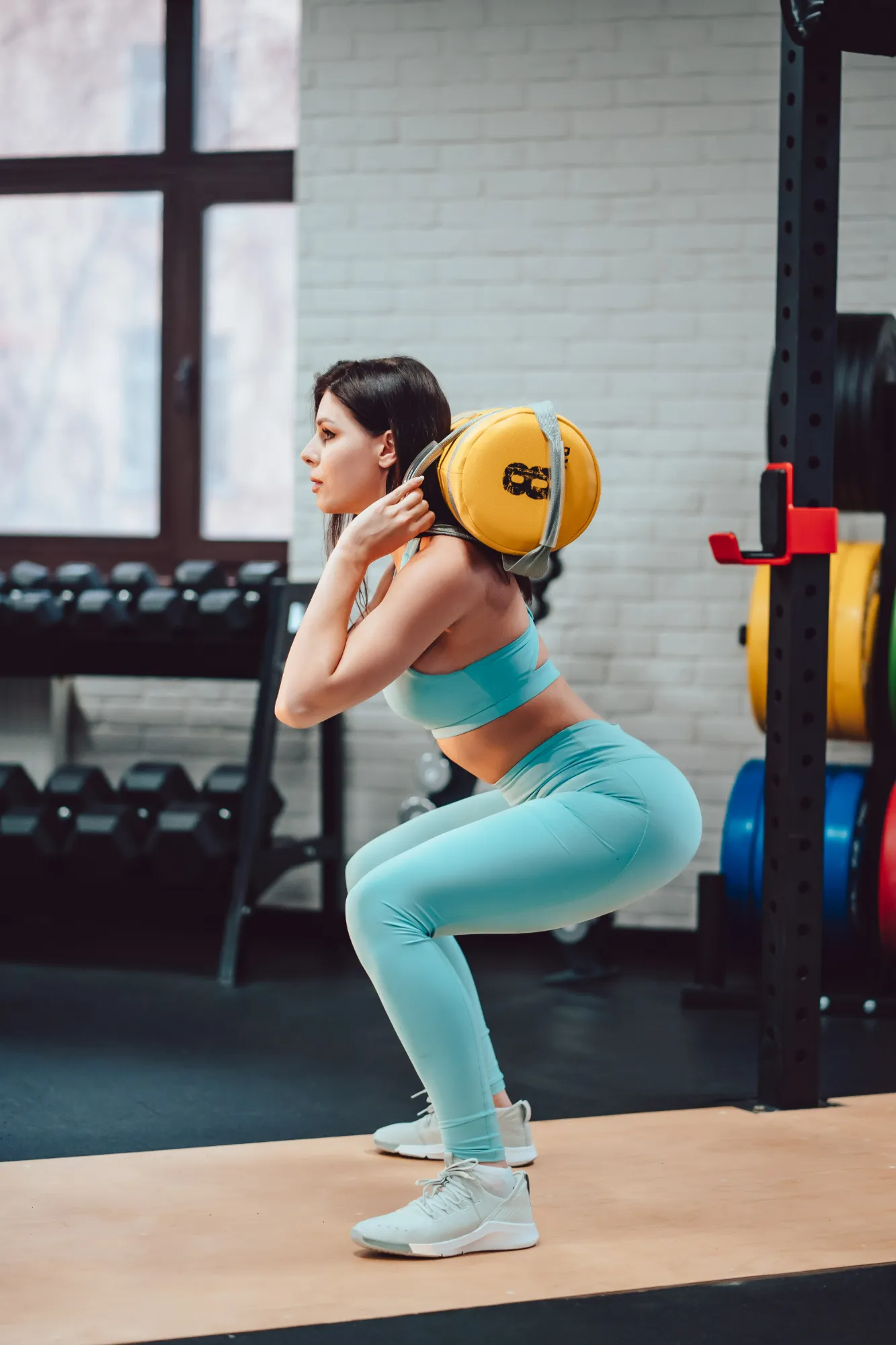
Weighted squats involve performing a squatting motion with the addition of external resistance. Weights like dumbbells, barbells, or kettlebells are used to do weighted squats. These are fantastic for increasing muscle mass and strength.
Execution
In a weighted squat, you incorporate resistance by holding weights on your shoulders (barbell squat), at your sides (dumbbell squat), or using other weighted equipment. The squatting motion involves bending your knees and hips while maintaining proper form, with the added challenge of external resistance.
Purpose
Weighted squats are a cornerstone strength training exercise to build muscle mass, strength, and power. By adding resistance, you increase the intensity of the activity, targeting the lower body muscles, including the quadriceps, hamstrings, and glutes.
Weighted squats are versatile and can be adapted for various fitness levels and goals, from hypertrophy to overall functional strength. Proper form is crucial to ensure effectiveness and reduce the risk of injury.
Goblet Squats
Execution
Goblet squats involve holding a dumbbell or kettlebell close to your chest, with your elbows tucked in. Begin by standing with your feet shoulder-width apart, toes slightly pointed out. Hold the weight securely at chest level. Lower your body into a squat by bending your knees and hips, keeping your chest upright and core engaged. Once your thighs are parallel to the floor, pause and push through your heels to return to the starting position.
Purpose
Goblet squats are excellent for beginners as they help to master proper squat form. This variation emphasizes the core, quads, glutes, and back muscles, ensuring full-body stability. Since the weight is held in front, it reduces strain on the lower back compared to traditional squats. Goblet squats also allow for a greater range of motion, improving mobility and flexibility.
Sumo Squats
Execution
In a sumo squat, your feet are positioned wider than shoulder-width, with toes pointing outward at a 45-degree angle. Hold a dumbbell or kettlebell with both hands in front of your body. Lower yourself by bending your knees and hips, keeping your back straight and chest up. Push through your heels to stand back up, squeezing your glutes at the top.
Purpose
Sumo squats place extra emphasis on the inner thighs (adductors), glutes, and hamstrings, making them great for targeting these often-neglected muscles. This variation also helps to increase hip mobility and strengthen the lower body while improving balance and coordination. Sumo squats are particularly effective for building lower body strength and toning the inner thighs.
Front Squats
Execution
Front squats are performed with a barbell or weights positioned across the front of your shoulders. To begin, place the barbell in front of your shoulders, gripping it securely with your elbows pointing forward. Stand with feet shoulder-width apart, engage your core, and lower your body into a squat by bending your knees and hips. Make sure your chest stays upright, and your elbows remain high. Push through your heels to return to the starting position.
Purpose
Front squats shift the focus from the glutes to the quads and core. They also reduce lower back strain, making them a safer option for those with back issues. This squat variation is ideal for improving posture, building lower body strength, and enhancing core stability. Front squats are frequently used in Olympic lifting and athletic training programs.
Overhead Squats
Execution
In an overhead squat, start by holding a barbell or dumbbell with your arms extended overhead, ensuring your elbows are locked out. Your feet should be shoulder-width apart. Engage your core and lower into a squat by bending your knees and hips, making sure to keep the weight stable overhead. Push through your heels to return to the starting position, maintaining control of the weight above your head.
Purpose
Overhead squats are a total-body exercise that improves strength, flexibility, and balance. They primarily target the shoulders, upper back, core, and lower body muscles. This squat variation also enhances coordination, stability, and overall athletic performance. Due to its complexity, overhead squats are more suited to advanced lifters who want to work on mobility and flexibility.
Bulgarian Split Squats
Execution
To perform Bulgarian split squats, position one foot behind you on a bench or elevated surface while your other foot is planted firmly on the ground. Lower your body by bending your front knee, ensuring your back remains straight and your core engaged. Your rear knee should come close to the ground, but not touch it. Push through your front heel to return to the starting position.
Purpose
Bulgarian split squats are a unilateral exercise, meaning they work one leg at a time. This variation is excellent for building lower body strength, improving balance, and correcting muscle imbalances. By isolating each leg, you engage the quads, hamstrings, and glutes more effectively. Bulgarian split squats also help improve flexibility and are often used in injury prevention programs.
Wall Squats (Wall Sits)
Execution
In wall squats, or wall sits, you lean your back against a wall with your feet shoulder-width apart. Slide down the wall until your knees form a 90-degree angle and your thighs are parallel to the floor. Hold this position for as long as possible, keeping your core tight and back flat against the wall.
Purpose
Wall squats are an isometric exercise that builds endurance and strength in the quadriceps, glutes, and calves. They are particularly beneficial for people with knee issues, as the exercise places minimal strain on the joints. Wall squats are a great addition to any leg workout routine, as they improve muscular endurance and stability.
Hack Squats
Execution
Hack squats are performed on a hack squat machine, where you place your feet on the platform and lean back into the support. Bend your knees and hips to lower your body while keeping your back flat against the pad. Push through your heels to return to the starting position, engaging the quadriceps throughout the movement.
Purpose
Hack squats target the quadriceps more directly than traditional squats and are great for building muscle mass in the legs. This variation is ideal for those looking to develop stronger quads while reducing strain on the lower back. The hack squat machine also allows for better control and safety during the exercise.
Box Squats
Execution
To perform a box squat, stand with your feet shoulder-width apart and position a box or bench behind you. Lower yourself into a squat, sitting back onto the box. Once seated, pause for a moment, then drive through your heels to stand back up. Focus on maintaining proper form throughout the movement.
Purpose
Box squats are a variation that helps improve squat depth and form. They are particularly useful for teaching beginners proper hip engagement and can also help experienced lifters break through strength plateaus. Box squats target the glutes, hamstrings, and quads while emphasizing control and stability.
Zercher Squats
Execution
Zercher squats are performed by holding a barbell in the crook of your elbows, with your arms bent at a 90-degree angle. Keep the bar close to your chest as you lower into a squat by bending your knees and hips. Maintain an upright posture throughout the movement. Push through your heels to stand back up.
Purpose
Zercher squats place less strain on the lower back while still engaging the core, quads, and glutes. This squat variation is great for improving posture, balance, and overall strength. The unique holding position challenges the upper body and core, making it a full-body exercise.
Squat Bar Placement-How To
Proper squat bar placement is crucial for a safe and effective workout. When performed correctly, squats engage multiple muscle groups, including the quads, hamstrings, and glutes.
To achieve this, ensure the bar rests comfortably on your upper back, just below the trapezius muscles. This placement promotes stability and prevents unnecessary strain on the neck and shoulders.
Plyometric Squats or Jump Squats

Exercises that incorporate hopping and jumping are known as plyometric squats. These are excellent for boosting power and speed. Plyometric squats involve explosive movements that include a jump.
Execution
In a plyometric squat, you descend into the squat position and explosively push off the ground, jumping into the air. You then land back into the squat position and repeat the movement.
Purpose
Plyometric squats enhance power, agility, and the ability to generate force quickly. High-intensity training often includes them to improve athletic performance and increase cardiovascular fitness.
Proper Foot Placement During Squats
Shoulder-width Stance
Begin with your feet positioned shoulder-width apart. This standard starting point promotes balance and aligns your body for a controlled descent and ascent during the squat.
Toes Slightly Outward
Allow your toes to point slightly outward, typically at a 5 to 20-degree angle. This natural positioning accommodates your hips’ natural alignment and minimizes knee joint stress.
Weight Distribution
Distribute your body weight evenly across both feet. This ensures balanced muscle engagement and prevents undue strain on specific areas, promoting a more comprehensive workout.
Common Mistakes to Avoid During Squat
Understanding proper foot placement also involves recognizing and avoiding common mistakes:
Excessive Toe Pointing
Avoid pointing your toes too far outward, which may strain your knees and compromise stability.
Uneven Weight Distribution
Be mindful of evenly distributing your weight on both feet to prevent imbalances affecting form and muscle engagement.
Neglecting Heel Contact
Ensure that your heels remain in contact with the ground throughout the squat. Lifting the heels excessively may destabilize the movement.
How Many Squats Should I Do Per Day?
How many squats should you do per day? The answer depends on your fitness level and goals. If you’re starting, you should do three sets of 10-15 reps three times per week. You can increase the number of sets and reps as your strength improves.
If you’re already an experienced lifter, you can do 4-5 sets of 8-10 reps 4-5 times per week. This will help to build strength and muscle mass.
It’s also important to listen to your body and take rest days. You don’t have to do squats every day, and giving your body time to rest and recover after a hard workout is essential.
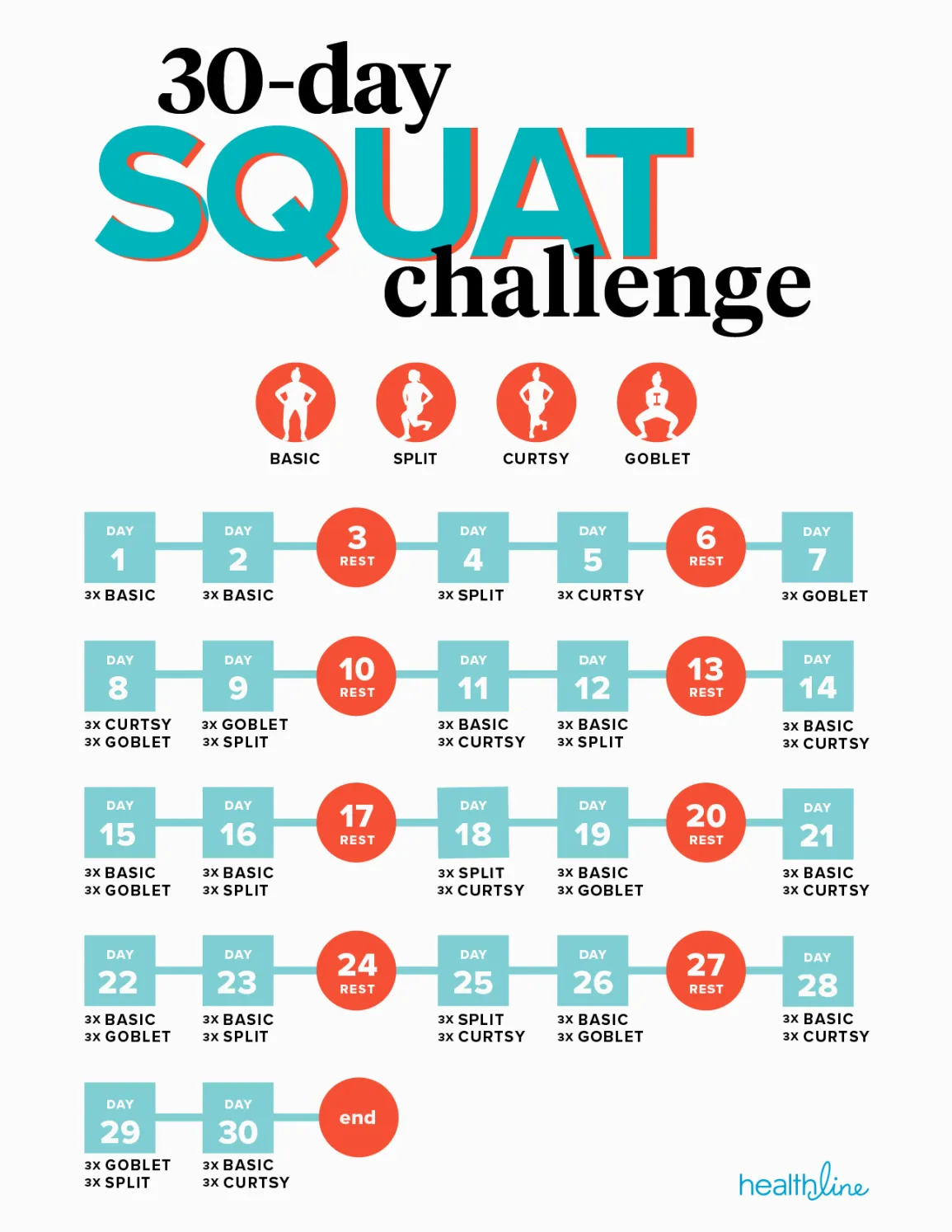
FAQ: What are the Tips to Improve Your Squat Performance
There are many tips and tricks to help you improve your squat performance. Here are a few:
-
Focus on the eccentric portion of the movement. This is the part where you’re lowering the weight. Make sure to control the weight and focus on feeling the muscles working.
-
Vary your rep ranges. This will help to keep your body challenged and prevent boredom.
FAQ: How to Incorporate Squats into Your Workout Routine
Squats can be incorporated into your workout routine in a variety of ways. If you’re starting, you can do bodyweight squats as part of your warm-up. This will help engage your muscles and prepare them for the workout.
You can incorporate weighted squats into your routine to build strength and muscle mass. You can do 3-5 sets of 8-10 reps, 3-5 times per week. Make sure to vary the rep ranges and rest days to keep your body challenged and prevent boredom.
You can also incorporate plyometric squats into your routine. These are explosive exercises that involve jumping and hopping. They’re great for improving speed and power.
How Many Calories Do Squats Burn
Squats are an excellent exercise to increase fitness levels and burn calories. You may burn between 3 and 5 calories per squat, depending on the intensity of the workout. You could burn between 90 and 150 calories by performing three sets of 10-15 repetitions.
Final Words
In our exploration of “How Many Squats Should I Do A Day?” we’ve uncovered insights to help you unlock your fitness potential. Squats, renowned for developing lower body strength and muscle tone, offer myriad benefits.
Understanding squat variations, from bodyweight to weighted and plyometric squats, allows for a versatile workout targeting different muscle groups. Research-backed evidence highlights the positive effects on muscle mass, cardiovascular health, and metabolism.
Proper squat execution is crucial, with a guide on foot placement and common mistakes. Insights on the number of squats per day cater to both beginners and experienced lifters.
Elevate your squat game with these tips, whether aiming for strength, muscle development, or overall fitness. Squatting is a journey towards a stronger, healthier you.

